
The 3rd International Conference on
Water Resource and Environment (WRE 2017)
Water Resource and Environment (WRE 2017)

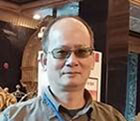 |
Dr. Chih-Huang Weng Professor, Dept. of Civil and Ecological Engineering, I-Shou University |
| Speech Title: Effective Adsorption of Direct Red 23 Azo Dye onto Powdered Tourmaline Abstract: The high electric field on the surface of tourmaline particles has a potential of enhancing electrostatic reactions during adsorption. However, information concerning the adsorption characteristics of dyes onto tourmaline is currently unavailable. In the present study, the behavior and efficiency of powdered tourmaline (PT) in removing the diazo Direct Red 23 (DR23) dye from aqueous solution was investigated. The observations from batch adsorption experiments indicated that the adsorption were more favorable under low adsorbate surface loading, low pH, high temperature, and low ionic strength conditions. A homogeneous particle diffusion model (HPDM) was used to characterize the process, and the rate of adsorption was found to be controlled by intra-particle diffusion. An activation energy of 4.54 kcal/mol was calculated, suggesting that the adsorption proceeded with a low energy barrier and that a physisorption was involved. The functional groups binding anionic DR23 on the PT particles were also identified. A maximum adsorption capacity of 153 mg/g was determined according to the Langmuir isotherm. The PT was subjected to a total of 5 regeneration runs without losing much of its dye-adsorption capacities. Due to its low price, abundant availability, and superb adsorption capacity, PT has a great potential for use as an effective adsorbent in removing DR23 from aqueous solutions. |
|
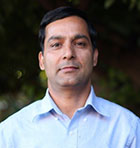 |
Dr. Deb P. Jaisi Environmental Biogeochemistry Laboratory, Department of Plant and Soil Sciences, University of Delaware |
| Speech Title: Impact of agricultural runoff of phosphorus in downstream water quality: A case in the Chesapeake Bay, USA Abstract: Phosphorus (P) loss from agricultural fields is a major cause of water quality problem around the world. Sources of P including agricultural runoff, geological sources, and recycling and remobilizing from legacy sources are poorly constrained largely due to methodological limitations. This, in fact, has been a major obstacle preventing the accurate assessment of nutrient loads released to open waters and developing appropriate nutrient management plans. We analyze dissolved, suspended particulate matter, and sediment bound P in the surface water, porewater, and sediment in the continuum to develop a source-sink relationship of P in an ecosystem. To achieve these goals, we merge advanced analytical techniques including stable isotopes [phosphate oxygen (δ18OP), nitrogen (δ15N), and carbon (δ13C)], spectroscopic methods [1-D (1H, and 31P) and 2-D NMR, Raman, and IR] and a suite of mineralogical (XRD), microscopic (SEM and TEM) and elemental analyses. Our key findings points towards dominant process of organic phosphorus remineralization and pathway of P cycling, active transformation of settling particular matter in water column, biological cycling out of pace with P loading from agricultural runoff, and higher rate of degradation of recalcitrant organic P. New insights gained from these findings on the pathway and extent of biological cycling are expected to be useful to address water quality issues in the Chesapeake Bay and extended to comparable watersheds in the world. |
|
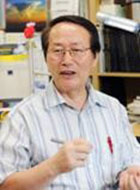 |
Dr. Hi-Ryong Byun Professor, Department of Environmental Atmospheric Sciences, Pukyong National University |
| Speech Title: Quantitative Definition and Spatiotemporal Distribution of Little Water Season (LIWAS) in Korea Abstract: Like other continental climatic regions Korea has a period around the spring when agricultural activities are interrupted frequently by a shortage of available water resources during the season. This season, which is termed the Little Water Season (LIWAS) in this study, has important implications for many socio-economic activities but the scientific definition of this season remains vague. In this study, the onset and termination dates, as well as the characteristics of the LIWAS have been defined based on the Available Water Resources Index (AWRI). Based on the proposed definition of LIWAS, the implications on hydrological conditions over a range of geographic scales and their inter-annual variations on the water resource environments in Korea have been assessed. To develop an appropriate index for LIWAS based on AWRI, the criterion value (CV) for LIWAS was set as the lowest 25th percentile of the AWRI values averaged for 30 years (1981-2010). Therefore, the Little Water Season for Korea (LIWAS_K) was considered as the period when the daily averaged AWRIs were successively lower than the CV (143.7 mm). Based on this, the mean onset and end date of LIWAS_K, was 9 February and 11 May which also reflected the period in the spring season when the available water resources are expected to the lowest. Moreover, a number of seasonal characteristics of the water availability during the LIWAS, such as the Little Water Intensity (LWI), Water Deficit Amount (WDA) and Water Deficit Intensity (WDI) have been defined for the particular study region. Based on our results, we aver that the proposed season classification of the LIWAS can be better analyzed using the concept of usable water resources as a classification of dry period instead of using temperature and raw rainfall datasets. |
|
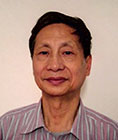 |
Dr. Ping Wang Senior Research Scientist, Virginia Institute Marine Science |
| Speech Title: Assessing Water Quality of the Chesapeake Bay by the Impact of Sea Level Rise and Warming Abstract: The influence of sea level rise and warming on circulation and water quality of the Chesapeake Bay under projected climate conditions in 2050 were estimated by computer simulation. Four estuarine circulation scenarios in the estuary were run using the same watershed load in 1991-2000 period. They are, 1) the Base Scenario, which represents the current climate condition, 2) a Sea Level Rise Scenario, 3) a Warming Scenario, and 4) a combined Sea Level Rise and Warming Scenario. With a 1.5-1.9oC increase in monthly air temperatures in the Warming Scenario, water temperature in the Bay is estimated to increase by 0.8-1oC. Summer average anoxic volume is estimated to increase 1.4 percent compared to the Base Scenario, because of an increase in algal blooms in the spring and summer, promotion of oxygen consumptive processes, and an increase of stratification. However, a 0.5-meter Sea Level Rise Scenario results in a 12 percent reduction of anoxic volume. This is mainly due to increased estuarine circulation that promotes oxygen-rich sea water intrusion in lower layers. The combined Sea Level Rise and Warming Scenario results in a 10.8 percent reduction of anoxic volume. Global warming increases precipitation and consequently increases nutrient loads from the watershed by approximately 5-7 percent. A scenario that used a 10% increase in watershed loads and current estuarine circulation patterns yielded a 19 percent increase in summer anoxic volume, while a scenario that used a 10% increase in watershed loads and modified estuarine circulation patterns by the aforementioned sea level rise and warming yielded a 6 percent increase in summer anoxic volume. Impacts on phytoplankton, sediments, and water clarity were also analysand. |
|
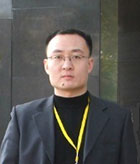 |
Dr. Qiang Liu Associate professor, Key Laboratory for Water and Sediment Sciences, Ministry of Education, School of Environment, Beijing Normal University |
| Speech Title: The hydrological effects of varying vegetation characteristics in a temperate water-limited basin Abstract: Aims: To extend the steady state Budyko-Choudhury-Porporato (or BCP) model by incorporating dynamic ecohydrological processes into it and combining it with a typical bucket soil water balance model (resulting in the dynamic BCP, or dBCP, model); and to assess the impacts of vegetation on the water balance in a temperate water-limited basin (i.e., the Yellow River Basin (YRB) in north China), where growing season phenology is primarily constrained by low temperatures. Methods: Used the dBCP model to assess the impacts of vegetation on the water balance. Results: The incorporation of dynamic growing season (fs) and dynamic effective rooting depth (Ze) conditions into the dBCP model improves results when compared to the original BCP model; dBCP model’s results vary depending on time-step used (i.e., we tested mean-annual to monthly), which reflected the influence of catchment variables, e.g., catchment area, catchment-average air temperature, dryness index and Ze; and actual evapotranspiration (E) is more sensitive to changes in mean storm depth (α), followed by P, Ze, and Ep. When taking into account observed variability of each of four ecohydrological variables, changes in Ze cause the greatest variability in E, generally followed by variability in P and α, and then Ep. Conclusions: Incorporating the dynamic ecohydrological processes to estimate E provides enhanced understanding of the interaction between climate, soil, vegetation and hydrological processes. This example provides additional insights into how P is partitioned to E and Q across a temperate water-limited basin. The dBCP model has modest forcing data requirements and can be applied to other regions globally. |
|
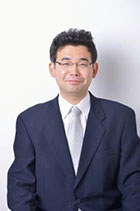 |
Dr. Tomohito Kameda Graduate School of Environmental Studies, Tohoku University |
| Speech Title: Removal of Borate and Fluoride in Aqueous Solution using Mg-Al layered double hydroxide: Kinetics and Equilibrium Studies Abstract: Mg–Al layered double hydroxides (Mg–Al LDHs) intercalated with NO3- (NO3·Mg–Al LDHs) and with Cl- (Cl·Mg–Al LDHs) were found to take up borate and fluoride from aqueous solutions. Boron was removed by anion exchange of B(OH)4- in solution with NO3- and Cl- intercalated in the interlayer of the LDH. Fluoride was removed by anion exchange of F- in solution with NO3- and Cl- intercalated in the LDH interlayer of the LDH. In all cases, the residual B and F concentrations were less than the effluent standards for B and F in Japan (10 and 8 mg/L), respectively. The rate-determining step of B and F removals by the NO3·Mg-Al and Cl· Mg-Al LDHs was found to be chemical adsorption involving anion exchange of B(OH)4- and F- with intercalated NO3- and Cl-. The removals of B and F are well described by a pseudo-second-order reaction kinetics, with Langmuir-type adsorption. In case of B, the values of the maximum adsorption and the equilibrium adsorption constant were 3.6 mmol g–1 and 1.7, respectively, for NO3 ·Mg-Al LDH, and 3.8 mmol g–1 and 0.7, respectively, for Cl·Mg–Al LDH. In case of F, the values obtained of the maximum adsorption and the equilibrium adsorption constant were respectively 3.3 mmol·g–1 and 2.8 with NO3 ·Mg-Al LDH, and 3.2 mmol·g–1 and 1.5 with Cl·Mg–Al LDHs. The B(OH)4- in B(OH)4·Mg–Al LDH produced by removal of B was found to undergo anion exchange with NO3- and Cl- in solution. The NO3 ·Mg-Al and Cl·Mg–Al LDHs obtained after this regeneration treatment were able to remove B from aqueous solutions, indicating the possibility of recycling NO3 ·Mg-Al and Cl·Mg–Al LDHs for B removal. The F- in the F·Mg–Al LDH produced by removal of F was found to exchange with NO3- and Cl- ions in solution. The regenerated NO3 ·Mg-Al and Cl·Mg–Al LDHs thus obtained can be used once more to capture aqueous F. This suggests that NO3 ·Mg-Al and Cl·Mg–Al LDHs can be recycled and used repeatedly for F removal. |
|
 |
Dr. Yongping Yuan Research Hydrologist, US EPA Office of Research and Development, Research Triangle Park, North Carolina |
| Speech Title: Water Quality Protection from Nutrient Pollution: Case Analysis Abstract: Water bodies and coastal areas around the world are threatened by increases in upstream sediment and nutrient loads, which influence drinking water sources, aquatic species, and other ecologic functions and services of streams, lakes, and coastal water bodies. For example, increased nutrient fluxes from the Mississippi River Basin have been linked to increased occurrences of seasonal hypoxia in northern Gulf of Mexico. Lake Erie is another example where in the summer of 2014 nutrients, nutrients, particularly phosphorus, washed from fertilized farms, cattle feedlots, and leaky septic systems; caused a severe algae bloom, much of it poisonous; and resulted in the loss of drinking water for a half-million residents. Our current management strategies for point and non-point source nutrient loadings need to be improved to protect and meet the expected increased future demands of water for consumption, recreation, and ecological integrity. This presentation introduces management practices being implemented and their effectiveness in reducing nutrient loss from agricultural fields, a case analysis of nutrient pollution of the Grand Lake St. Marys and possible remedies, and ongoing work on watershed modeling to improve our understanding on nutrient loss and water quality. |
|
 |
Dr. Yu Yang Associate professor, School of Environment, Beijing Normal University |
| Speech Title: The Impacts of PhACs on Biofouling during the NF/RO Membrane Filtration Abstract: Aims: The aim of our study is to investigate the impacts of PhACs on biofouling during NF/RO membrane filtration through a comparison between the control experiments without PhACs addition and the feed water spiked with a cocktail of PhACs. Methods: Biofouling (BF) test, in which biofilm growth was promoted, was performed by pure culture inoculum (P. aeruginosa) into the artificial wastewater. All experiments were carried out in a cross-flow membrane system using a flat sheet membrane with an effective area of 24 cm2. The membrane foulants characterized by TOC, EPS, MW and EEM were related to membrane deterioration in terms of flux and PhACs rejection. Results: The flux decline of both membranes with PhACs addition in feed water increased compared with the control experiment without PhACs addition, suggesting the PhACs aggravated the biofouling. Total EPS and TOC on the fouled surface were both higher than the control experiment. Addition of PhACs was shown to induce a significant increase of the concentration of proteins on the membrane surface whereas no significant change was found for polysaccharides. Conclusions: The presence of PhACs increased the biomass both in the feed water and on the membrane surface and hence cause a severer biofouling. This study may help understand the effects of mixtures of PhACs on biofouling and the removal of PhACs by NF/RO membranes in practical application. |
|
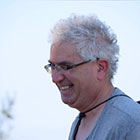 |
Dr. Yoram Gerchman Biology and Environment, University of Haifa and Oranim College |
| Speech Title: Combined Constructed Wetland-UV Systems for Local Small Scale Waste Water Treatment Abstract: The Middle East region is an arid area, resulting water availability being an ongoing issue. In Israel much of this issue is solved by wastewater treatment and reuse (and recently by seawater desalination). Nevertheless wastewater treatment is much scarcer in the Palestinian authority and in Jordan, due to the relative high percentage of rural population in these countries, combined with the high costs and complexity associated with building and maintaining centralized wastewater treatment facilities. To try and help the remediation of this situation we study the use of simple local, decentralized wastewater treatment systems - Constructed Wetlands (CW). We have found that these systems offer good removal of COD to acceptable standards, but lack in removal of bacteria from the water. To remediate this we have tested the use of low-cost, off-the-shelf, low pressure UV systems. Those UV systems were found to decrease the bacterial count to within standards, but appropriate flow rate was imperative. These results are of special interest since the CW effluent %UVT was much lower (40-50%) than usually accepted for UV treatment with such system. Results demonstrate the power of applying a simple low-cost combined CW-UV system as a viable option for wastewater treatment in small secluded communities. |
|
 |
Dr. Jose Ramon Barros Cantalice Professor, Soil Conservation Engineering Laboratory, Department of Agronomy, Rural Federal of Pernambuco University |
| Speech Title: Hydraulic resistance in overland flow generated by vegetation in a semiarid hillslope gradient as controlling interrill erosion Abstract: The vegetation generates hydraulic resistance in shallow flow that occurs in interrill erosion. Thus, this research had the objective of analyzing the hydraulic roughness parameters generated by shrub vegetation and crops in a semiarid hillslope in field condition under interrill erosion. To this a set of simulated rains were made in two slope gradient. The first one at 4.9% and second one at 8.9 %, cover by shrub and also used to produce semiarid crops were conducted set of two experiments to investigate the hydraulic resistance originated from different vegetation types, and its effects on interrill erosion. The first set experiments were conducted under simulated rain in a randomized block with 5 treatments and 5 replicates, totaling 25 experimental plots with dimensions equal to 1 m wide by 2 m in length, bounded by aluminum sheets. The slope of this field was 8.9%. The treatments were consisted of five different conditions created from a bare soil and four different vegetation types as follows: Shrub (shrub plus shrub litter), shrub litter (shrub, where the plants were removed), Guandu (Cajanus cajan) was spaced in 1.5 x 0.7 m and had 1.3 m tall, “sweet potato” (Ipomoea potatoes Lam) spaced in 0.5 x 0.25 m in herbaceous size. The second set experiments were conducted in a part of hillslope under 4.9% slope under simulated rain in a randomized block with 3 treatments and 4 replicates, totaling 12 experimental plots with the same dimensions. In this experiment the treatments were: Shrub (shrub plus shrub litter), Cactus (Opuntia ficus-indica Mill.) spaced in 1 x 0.5 m and in growth stage with 0.45 m tall, and bare soil. The simulated rainfall was applied using a simulator comprising a nozzle type spray VeeJet 80 -150 internal diameter of 1/2 inch. The bigger water discharges and velocities had occurred in the bare soil to both experiments. The lowest values to velocity and water discharges were obtained on the conditions imposed to flow from shrubs on the two experiments. The shrub litter also has created significant decrease on velocity of flow and water discharge. The flows that crossed shrubs showed the highest depth and Darcy-Weisbach coefficient values. Nevertheless, all plant types affected the hydraulic resistance. The overland flow that had occurred under Ipomea potatoes showed lowest hydraulic resistance, equaling roughness presented by the bare soil. The flow that had occurred between Guandu plants also showed the highest depth had the second high level of hydraulic resistance by Darcy-Weisbach coefficient. The obtained results show that on the overland flow on 8.9% has the drag coefficients to all testes were better adjusted to Froude number by an exponential expression. |
|
 |
Dr. Carlo Gualtieri Professor, Department of Civil, Construction and Environmental Engineering, University of Napoli Federico II |
| Speech Title: Numerical Study of Hyporheic Flows and Resistance on Bedforms Abstract: Despite the traditional separation between the studies of surface water and groundwater flows, it has been long recognized that rivers and aquifers are strongly connected and that their interaction gives rise to a continuous exchange of water and solutes, which exerts a significant influence on water quality. The volume within the porous medium where groundwater and stream water mix is termed hyporheic zone, which has hydrodynamic, physiochemical and biotic characteristics different from those of both the river and the subsurface environments. The paper presents results from a numerical study carried out to investigate the influence the geometry of a bedform on a coupled free fluid-porous medium flow. Laminar flow in the water column above three different types of periodic bedforms and Darcian flow in the underlying permeable sediments were simulated. The simulations were carried out under steady-state conditions in a range of bedform height-based Reynolds number ReH from 6 to 4448. First, numerical data confirmed the close relationship between the characteristics of the separation region in the water column downstream of the bedform crest and those of the hyporheic zone in the porous medium. Second, numerical results highlighted the influence of the geometry of the bedform on the development of the hyporheic zone. Third, the numerical data were validated by a comparison with both numerical and experimental data from the laminar backward-facing step flow. Fourth, skin friction and form drag were evaluated and compared. Finally, the issue of the application of these results to turbulent flows was discussed. |
|
 |
Dr. Narong TOUCH Department of Civil and Environmental Engineering, Hiroshima University |
| Speech Title: Improving sediment and water qualities by sediment microbial fuel cell technology Abstract: Aims: Recently, methods of using industrial waste, for example steel slag and granulated coal ash, have been paid attention for improving sediment and bottom water qualities. In our research, we take a new look at improving sediment and bottom water qualities by sediment microbial fuel cell technology (SMFCT). Methods: Laboratory experiments were conducted to examine the improvement of sediment and bottom water qualities by SMFCT. Electrons were recovered from sediment at different conditions, and changes in sediment conditions (e.g., ignition characteristic, pore water quality) and bottom water quality by SMFCT were investigated, compared with those in the cases without SMFCT. Results: Diffusion of reduced substances released during organic matter digestion, such as hydrogen sulfide and manganese ion, from sediment into bottom water was abated by SMFCT, lowering depletions of dissolved oxygen and redox potential of bottom water. Anodic oxidation of SMFCT increased redox potential of sediment, and increased ferric ion concentration in sediment which can fix phosphate in sediment. SMFCT also converted organic matter in sediment to labile structure-organic matter state, which is expected to enhance sediment remediation. Conclusions: It can be concluded from our results that SMFCT is an alternative technology to improve sediment and water qualities concurrently. |
|
 |
Dr. BVN. P. Kambhammettu Department of Civil Engineering, Indian Institute of Technology |
| Speech Title: Grid-Size Dependency of Evapotranspiration Simulations in Shallow Aquifers: An Optimal Approach Abstract: This research aims at improving the performance of regional groundwater models by incorporating high-resolution elevation data into the head-dependent packages of MODFLOW. Model code specific to the evapotranspiration package (EVT) of MODFLOW was modified to account for the variability in elevation data and to effectively delineate the evapotranspiration (ET) simulated region at user-specified digital elevation model (DEM) resolution. The regional groundwater model of the Rincon Valley–Mesilla Basins (NMOSE-2007 flow model) was improved and considered to evaluate and validate the developed code. The base DEM of the study area is smoothened and aggregated to various resampled resolutions that are integer divisors of NMOSE-2007 flow model resolution for use with ET simulation. A gradual decrease in ET outflow is observed when the variability in elevation is eliminated across the grid cell. Also, changes in cumulative ET outflow (as a fraction of total outflow) at different resampled grids followed a similar trend during the simulation. The computational cost is high for the models simulated at fine resolution, whereas the simulation accuracy is low for the models simulated at coarse resolution. To select the optimum resampled DEM resolution to simulate the ET component of groundwater for use with the NMOSE-2007 flow model, a chi-square test of homogeneity was performed at 5 and 10% significance levels by considering computational cost and simulation accuracy as the base parameters. Results of the statistical analysis concluded that simulating ET component at 80.467-m resolution and integrating the outflows to model cell (402.336 m) resolution would significantly improve the performance of the flow model without compromising on the computational cost. |
|
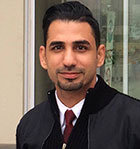 |
Dr. Haider M. Zwain College of Water Resources Engineering, Al-Qasim Green University |
| Speech Title: Enhanced Biodegradation of the Solid Fraction from Recycled Paper Mill Effluent in Modified Anaerobic Inclining-Baffled Reactor Abstract: Recycled paper mill effluent (RPME) contains high concentrations of organic matters and total solids, and therefore requires proper treatment prior to discharge. There is a lack of experimental data available on the enhancement of RPME biodegradation and digested sludge in anaerobic reactors. Accordingly, the thermal condition is believed to have a major effect on the biodegradation processes of organic substrates. Therefore, the biodegradation of RPME was evaluated in modified anaerobic inclining-baffled reactor (MAI-BR) under low mesophilic (29°C), mesophilic (37°C) and thermophilic (55°C) conditions. The compartmental contents of TSS, VSS, TDS, lignin and VSS/TSS ratio were studied. The results showed a notable reduction in TSS concentration throughout the reactor with the increase in temperature, whereas an increase in concentrations of VSS and TDS concentrations were observed, especially in Compartment 1. Under thermophilic conditions, the VSS/TSS ratio was higher than this in mesophilic conditions, while lignin became hard to remove. These results conclude that operating the reactor at thermophilic has reduced the digested sludge within the system and enhanced the biodegradation process of RPME. |
|
|
Dr. Komali Kantamaneni Maritime, Technology and Environment Hub, Research and Innovation, Southampton Solent University | |
| Speech Title: Landscape Planning and Erosion Vulnerability Assessment: A Novel Approach Abstract: Aims: Identification of disappearing coastal destinations of the UK based on the intensity of erosion in diverse landscapes. In addition, a combined coastal vulnerability framework will be developed to evaluate the current and future scenarios of disappearing coastal destinations. Methods: Basic CVI (Coastal Vulnerability Index) concepts of Kantamaneni (2016a; 2016b) have been adapted to the current study for an evaluation of combined coastal vulnerability (physical, economic, and socio-economic). This methodology was modified based on the study site’s landscape and erosion characteristics. As a result of adding new physical and socio-economic parameters to those defined by Kantamaneni (2016a; 2016b), these characteristics were measured differently. Along with these evaluations, GIS vulnerability maps were generated, making the given study unique. Results: Primary results revealed that five coastal sites across the UK (four in England - Spurn Head, Barton on Sea, Birling Gap, and Hallsands, and one in Scotland - Benbecula) were identified as disappearing coastal destinations. These destinations are very likely to crumble (most of the area) into the sea in the next two centuries because of unique landscape futures and high intensity erosion rates. Subsequently, the UK map will be changed in the next two hundred years. Conclusions: Results of this research will improve current understanding of both the physical and economic consequences of changing environmental conditions, particularly in highly eroding and low-lying areas. This study could help inform the effective planning of coastal management strategies in both physically and/or economically important areas. |
|
 |
Dr. Neha Sunger Department of Health, West Chester University |
| Speech Title: Quantitative Microbial Risk Assessment for Recreational Exposure to Water Bodies in Philadelphia Abstract: Aims: Primary focus of this study was to estimate the risk of gastrointestinal illnesses (GI) associated with recreational exposure to Philadelphia waterways, under dry and wet weather conditions. A second objective was to identify the type-of-activity leading to the potential of maximum health risk to the users. Methods: A quantitative microbial risk assessment (QMRA) approach was adopted to to ascertain if Philadelphia waters are safe for recreation. Using maximum likelihood estimation, stochastic exposure models were generated for each exposure scenario and Monte Carlo techniques were applied to characterize uncertainty in final risk estimates. Results: The dry-weather risk estimates were found significantly lower than those predicted for wet-weather conditions. Moreover, the predicted risk, calculated in proportion of the frequency of use, was elevated at 6 out of 10 sites (ranging from 9 to 52 illnesses/1000 users/day). Activities contributing maximum to the risk of GI illness at creeks were identified as wading and playing (81%), while fishing was the potential risk contributor (65%) at rivers. Conclusions: The quantitative measure of risk contribution from each type of water activity obtained from this study can be useful for policy makers in prioritizing the future interventions. |
|
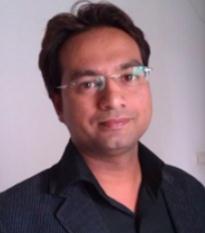 |
Dr. Varenyam Achal Associate Professor, School of Ecological and Environmental Sciences, East China Normal University |
| Speech Title: Application of microbial carbonate precipitation in remediation of strontium contaminated aquifer quartz sand Abstract: Aquifers contaminated by heavy metals poses a great danger to humans and the environment and efficient treatment of such aquifers is highly desired. Microbially induced calcite precipitation (MICP) has been proved as one of promising approaches for remediation of heavy metals from various environments with advantages on other current bioremediation techniques. In this talk, MICP process will be evaluated for its potential to remediate strontium from aquifer quartz sand. A Sr resistant urease producing Halomonas sp. was characterized for its potential role in bioremediation that removed 80% of Sr from soluble–exchangeable fraction of aquifer quartz sand. Further, the mechanism responsible for this remediation process will be discussed, which showed the ability of MICP in sequestering soluble strontium as biominerals. |
|
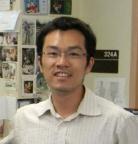 |
Dr. Hua Zhong School of Water Resources and Hydropower Engineering, Wuhan University College of Environmental Science and Engineering, Hunan University Key Laboratory of Environmental Biology and Pollution Control (Hunan University), Ministry of Education |
| Speech Title: In-situ activation of persulfate by magnetite nanoparticles in a sand porous media for degradation of 1,2-dichloroethane Abstract: Aims: Test the method of using magnetite nanoparticles (MNPs) as a heterogeneous activator for in situ activation of persulfate in porous media for degradation of 1,2-DCA, a chlorinated solvent compound that is refractory to natural attenuation. Methods: 1-D column reactive transport experiments were conducted. The MNPs were emplaced into the column through a facilitated transport method using carbxymethyl cellulose as the facilitative reagent. Four columns were prepared for the reactive transport experiments, which were a clean sand column, a sand column containing 1.9% of MNPs, a sand column containing 5.4% of MNPs, and a sand column containing 9.4% Fe3O4 solids with much larger particle size. Solutions of DCA, or a mixture of persulfate and DCA with a molar ratio of 2:1, 5:1 or 20:1, were injected into the columns. Chemistry of the effluents was analyzed. The MNPs before and after the experiments were analyzed using SEM-EDS, XPS and XRD and compared. Results: Persulfate in the absence of MNPs caused no degradation of DCA. MNPs alone caused limited conversion of DCA. Persulfate with the activation of MNPs caused significant degradation of DCA and DCA removal efficiency increased with the increasing persulfate concentration. At the molar ratio of 20:1 between persulfate and DCA, persulfate caused fully liberation of chloride, indicating complete degradation of the intermediate products. Increasing MNPs content in the column did not have significant effect on DCA removal efficiency. The MNPs were more efficient that the Fe3O4 solids for persulfate activation. Minimal soluble Fe was produced during the reactive transport. Conclusions: The MNPs in the sand porous media can successfully activate persulfate to degrade chlorinated solvent compounds under dynamic flow conditions. The converted DCA can be completely mineralized at a proper molar ratio between persulfate and DCA. The activation shows sustainability. |
|
 |
Dr. Younggu Her Agricultural and Biological Engineering Department / Tropical Research and Education Center, Institute of Food and Agricultural Sciences, University of Florida |
| Speech Title: A new look at an old hydrological concept: a time-area method for watershed routing Abstract: A time-area method provides an intuitive way of simulating runoff routing processes and understanding the disproportional contributions of areas to streamflow. The method has been used as a tool to derive unit hydrographs from the topographic features of a watershed in many hydrological analyses and models including the geomorphological instantaneous unit hydrograph (IUH) method, the Clark, and Nash IUH models. Recent studies showed the potential of a time-area concept as a framework to consider spatially distributed hydrologic processes in constructing direct runoff hydrographs. However, the utility of a time-area method has not been fully explored yet. This study takes a new look at an old hydrological concept, a time-area method, and reinvents it as a method to explicitly route overland and channel flow in watershed modeling. This article explains how the original concept of a time-area method is coupled with a simple routing scheme and demonstrates how the newly proposed time-area method describes spatiotemporally varied hydrologic processes. The method was applied to predict the runoff hydrographs of a study watershed. Results showed the promising performance of the new method as a prediction model and its great utility as an analytical tool for decision making. In the application, the model did neither rely on the unit hydrograph theory to construct direct runoff hydrographs nor require the solution of the shallow water (or Saint Venant) equation to describe two-dimensional overland flow routing processes. The method is expected to be a useful and efficient tool for a hydrologic analysis. |
|
 |
Dr. Roger Saint-Fort Department of Environmental Science, Faculty of Science and Technology, Mount Royal University |
| Speech Title: Effect of a water-based drilling waste on receiving soil properties and plants growth Abstract: One of the primary concerns of the rising growth of the petroleum industry in Alberta, Canada is on the proper management of drilling streams generated during drilling operations. Land spreading represents an attractive option for managing water-based drilling waste, however, the impact on soil properties and phytotoxicity remains largely unknown. This study was carried out to assess the relative effects of recommended guideline for land spraying loading rate application on soil properties and plants growth. More... |
|
 |
Dr. Rosario H. Pérez Espejo Institute of Economics Research, National Autonomous University of Mexico |
| Speech Title: Agriculture and water in Central Mexico: A case study Abstract: Objective: This paper examines the use of water and other agrochemicals in agriculture and their impact in water quality. It also analyzes the role of the institutions and regulations to improve the use of agricultural inputs in order to control water pollution. Methods: A survey made to 145 producers was conducted in 2008 in the Irrigated District 011 in the State of Guanajuato, Central Mexico, and a Likert Scale was applied to analyze the producer’s perception regarding water pollution. Several visits and interviews to core agents were made in 2000, 2001 and 2006 to update information. Results: Information about the use of water, chemical fertilizers, pesticides and herbicides (especially atrazine) in four main crops was obtained. Environmental programs and regulations carried out in the region were analyzed. Some measures of public policy were proposed. Conclusions: Agricultural practices should be improved, as well coordination among institutions. General subsidies should be avoided and training programs should be established. A tax on pesticides was suggested. Acknowledgements: The initial research was supported by the PAPIIT 305107 Program from UNAM. |
|
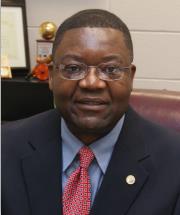 |
Dr. Paul B. Tchounwou Environmental Toxicology Research Laboratory, NIH-RCMI-Center for Environmental Health, College of Science, Engineering and Technology, Jackson State University |
| Speech Title: Chromium-induced biochemical, genotoxic and histopathologic effects in liver and kidney of Goldfish, Carassius auratus Abstract: Fish constitute an excellent model to understand the mechanistic aspects of metal toxicity vis-à-vis oxidative stress in aquatic ecosystems. Hexavalent chromium (Cr (VI)), due to its redox potential can induce oxidative stress (OS) in fish and impair their health. In the present investigation, we hypothesize that OS plays a key role in chromium induced toxicity in goldfish; leading to the production of reactive oxygen species (ROS) such as O.2, H2O2, OH., and subsequent modulation of the activities of antioxidant enzymes such as catalase (CAT), superoxide dismutase (SOD), metallothioneins (MT), glutathione proxidase (GPx), genotoxicity and histopathology. More... |
|
 |
Dr. Surya Bhattarai School of Health, Medical and Applied Sciences (HMAS), CQ Univeristy |
| Speech Title: Hydrogen peroxide injection in irrigation water for improving the efficiency of drip irrigation Abstract: Irrigated agriculture contributes significantly to global food security. Flood and furrow are common irrigation methods in the world, but are known to have poor irrigation water use efficiency (WUE). The WUE of irrigated agriculture must be improved because of the declining allocation of irrigation water due to competing demand for fresh water with industry, domestic and environmental use and also the uncertainty brought about by the global climate change impacting the water resources. The future access to irrigation water could be greatly affected in the arid and semi-arid regions of the world where the supply of irrigation water is already under stress. More... |
|
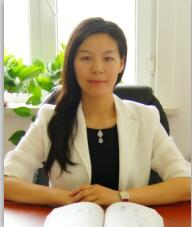 |
Dr. Hui Zhu Associate professor, Key Laboratory of Wetland Ecology and Environment, Northeast Institute of Geography and Agroecology, Chinese Academy of Sciences |
| Speech Title: Using constructed wetlands for the treatment of saline wastewater Abstract: Saline wastewater originating from sources such as agriculture, aquaculture, and many industrial sectors usually contains high salts and other contaminants, which adversely affect both aquatic and terrestrial ecosystems. Therefore, the treatment of saline wastewater, for both salts and specific contaminant removal, has become a necessary task in many countries. More... |
|
 |
Dr. Sainath Parasram Aher S.N. Arts, D.J.M. Commerce & B.N.S. Science College |
| Speech Title: Geospatial Technology for Sustainable Water Diversion Planning in Western Ghats Area, Maharashtra, India Abstract: Most of the water diversion projects in the world are persisting impractical due to absence of precise level physical, hydrological, land use land cover (LULC) and linked socio-economic information prior to project execution. Obtaining the data for successive performance of water allocation by convectional surveying is time consuming where need a large resources with mega budgetary provision. More... |
|
 |
Prof. Z. Fuat TOPRAK Dicle University Engineering Faculty, Civil Engineering Department |
| Speech Title: The Advantages of ZFT Algorithm in Determining Water Losses in Water – Networks Abstract: Paralleling to the rise in both world population and water trade, and development in technology, global changes in climate, water amount per capita decreases. Although, there are many alternatives in supplying foods, energy etc., however there is not thing to be alternative to water. Therefore, the fresh water resources should be effectively used. For this reason, water losses in water-networks have to be controlled as well as reduced without any cost-avoidance. More... |
|
 |
Dr. Kai Hsien Chi Associate professor, Institute of Environmental and Occupational Health Sciences, National Yang Ming University |
| Speech Title: Environmental Fate and Sinks of PCDD/Fs in Taiwan: Effects of Climate Change Abstract: Aims: Polychlorinated dibenzo-p-dioxins (PCDDs) and polychlorinated dibenzofurans (PCDFs) are persistent organic pollutants (POPs) that are formed and released unintentionally from anthropogenic sources. The high persistence of PCDD/Fs results in the concentrations of these contaminants in environment decreasing only very slowly. In this study, tropical cyclone (typhoon) events were explored in terms of their influence on the environmental fate and transport of PCDD/Fs in Taiwan under a climate change scenario. More... |
|
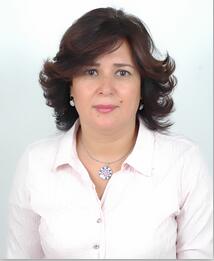 |
Prof. Naoual Semlali Aouragh Hassani Industrial Processes Department, Mohammadia School of Engineers, UNIVERSITY MOHAMMED V IN RABAT |
| Speech Title: Energy consumption evaluation of new hybrid seawater desalination process combining freezing and reverse osmosis Abstract: Currently, many technological advances and innovations are in development to improve industrial seawater desalination processes, principally by minimizing process energy consumption, improving quality of desalinated water and reducing environmental impact. Moreover, energy and environmental contexts impose long-term efforts in terms of energy efficiency especially in desalination industry. Thus, new and sustainable processes development is among the most significant challenges. The main purpose of this work is to improve seawater desalination cost through the development of an innovative method more efficient than the existing desalination processes in use. Benchmarking study and a literature analysis conducted out, have allowed to orientate our research towards the development of a new industrial hybrid process combining freezing as seawater pretreatment technology and reverse osmosis (RO) modules for desalination. Energy consumption theoretical study of the proposed hybrid desalination process was conducted upon the basis of mass and energy balances of the freezing process and simulation of RO desalination process using non-commercial software. Obtained results show that the new hybrid seawater desalination process leads to a promising energy consumption gain of about 25% and permits an improvement of the osmosis water quality of about 71% compared to the conventional-RO desalination. |
|